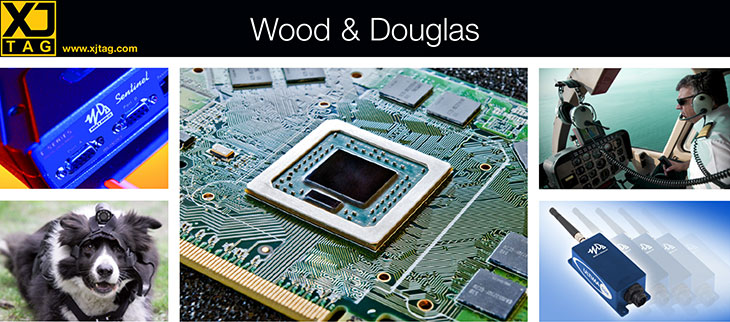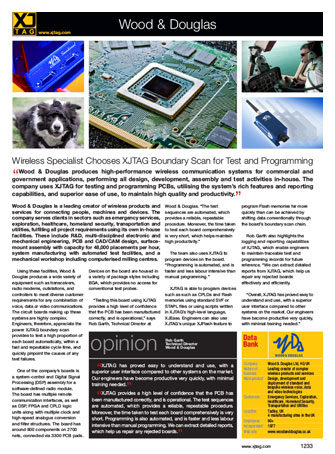Wood & Douglas produces high-performance wireless communication systems for commercial and government applications, performing all design, development, assembly and test activities in-house. The company uses XJTAG for testing and programming PCBs, utilising the system’s rich features and reporting capabilities, and superior ease of use, to maintain high quality and productivity.
Wood & Douglas is a leading creator of wireless products and services for connecting people, machines and devices. The company serves clients in sectors such as emergency services, exploration, healthcare, homeland security, transportation and utilities, fulfilling all project requirements using its own in-house facilities. These include R&D, multi-disciplined electronic and mechanical engineering, PCB and CAD/CAM design, surface-mount assembly with capacity for 48,000 placements per hour, system manufacturing with automated test facilities, and a mechanical workshop including computerised milling centres.
Using these facilities, Wood & Douglas produces a wide variety of equipment such as transceivers, radio modems, outstations, and controllers to meet diverse customer requirements for any combination of voice, data or video communications. The circuit boards making up these systems are highly complex. Engineers, therefore, appreciate the power XJTAG boundary scan provides to test a high proportion of each board automatically, within a fast and repeatable cycle time, and quickly pinpoint the causes of any test failures.
One of the company’s boards is a system-control and Digital Signal Processing (DSP) assembly for a software-defined radio module. The board has multiple remote communication interfaces, as well as DSP, FPGA and CPLD logic units along with multiple clock and high-speed analogue conversion and filter structures. The board has around 800 components on 2700 nets, connected via 3300 PCB pads. Devices on the board are housed in a variety of package styles including BGA, which provides no access for conventional test probes.
“Testing this board using XJTAG provides a high level of confidence that the PCB has been manufactured correctly, and is operational”, says Rob Garth, Technical Director at Wood & Douglas. “The test sequences are automated, which provides a reliable, repeatable procedure. Moreover, the time taken to test each board comprehensively is very short, which helps maintain high productivity.”
The team also uses XJTAG to program devices on the board. “Programming is automated, and is faster and less labour intensive than manual programming.”
XJTAG is able to program devices such as such as CPLDs and Flash memories using standard SVF or STAPL files or using scripts written in XJTAG’s high-level language, XJEase. Engineers can also use XJTAG’s unique XJFlash feature to program Flash memories far more quickly than can be achieved by shifting data conventionally through the board’s boundary scan chain.
Rob Garth also highlights the logging and reporting capabilities of XJTAG, which enable engineers to maintain traceable test and programming records for future reference. “We can extract detailed reports from XJTAG, which help us repair any rejected boards effectively and efficiently.
“Overall, XJTAG has proved easy to understand and use, with a superior user interface compared to other systems on the market. Our engineers have become productive very quickly, with minimal training needed.”







